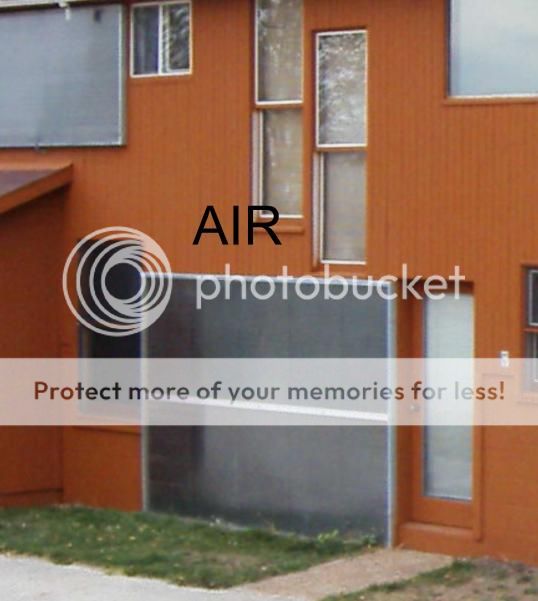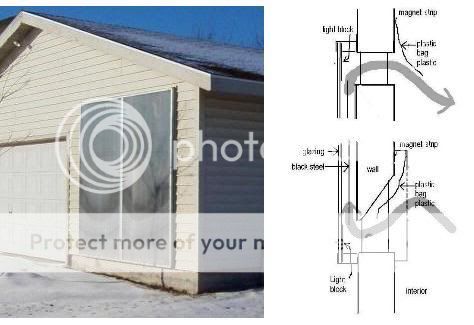Ok. I looked up the specs on a real, commercial solar air heater, the 'Solar Sheet'. This product retails for $2000 form Northern Tool.
Discussion here:
http://forum.solar-electric.com/showthread.php?10213-quot-SolarSheat-Solar-Air-Heaters-quot-vs-DIY
It has a 2 m^2 collector area, and is intended to be mounted vertically south facing for winter space heating.
The SRCC rating page for it is at:
http://www.altestore.com/mmsolar/Others/SRCC_1500G.pdf
It says that when the outdoor temp is 36°F colder than indoors, it will generate 10,400 BTU per sunny day. If we assume a sunny winter day has 4 hours of full output power, this suggests it delivers ~2600 BTU/h, about 760W.
Looking at PVWatts for a vertical southfacing collector, the PV hours of resource are about 100 hours per month during winter months. If all those hours were full clear sun, then the 'solar sheet' would deliver 250 kBTUs/month in the winter time. In a 6 mo heating season, that is 1.5 million BTUs, worth $30-50 per year, depending on your fuel. Simple payback on the $2k product is 40-70 years.
It looks like the stagnation temp for direct sun is ~100°F. That is, the efficiency of collection drops linearly to zero as inddor-outdoor delta T approaches 100°F. So at -10°F in WI, the output would be less than 25% of the numbers above, or 2500 BTUs per very cold sunny day. The same as burning 150 grams of wood. Or about $0.50 of conventional heat at $20/MBTU for each of those days. You would only need 4000 such days to pay off the unit.
My previous estimates showed that the best, single-glazed DIY panels had similar BTU output per unit area to the above product. While you can make a 2 m^2 panel for less than $2000, it will still only provide ~1.5 MBTU/yr from places with a 100 hr/mo winter resource. To get a more reasonable fraction of your heat in a superinsulated house, say, 15 MBTUs, now you are looking at 20 m^2 of collectors, a non-trivial amount of DIY work.
Or you can get PV grid-tie installed, and use mini-splits, much more cost effectively.





